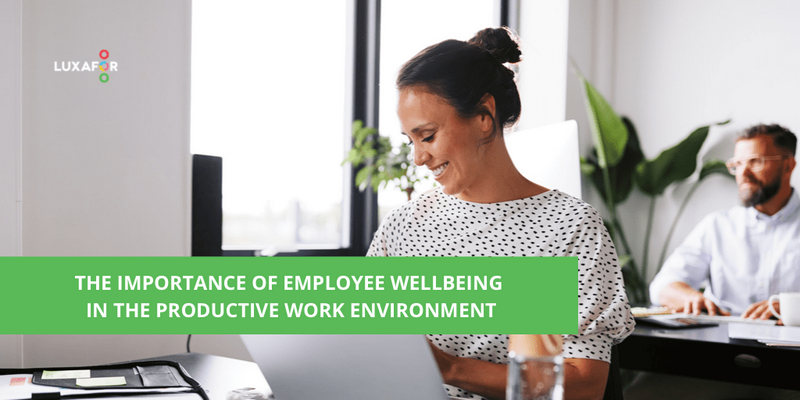The importance of employee wellbeing in the productive work environment
Of late, mental health in the workplace has been the talk of the town in business and media outlets. But why should we care about the mental health and wellbeing of employees? The lack of care owing to hostile work environments and prolonged job dissatisfaction is cited as one of the major reasons for the global phenomenon labeled the “Big Quit” where scores of employees have resigned from their place of employment ever since the pandemic.
Here are some stats that can give us some perspective on how vital these variables are for a productive work ethos.
- In a meta-analysis of 339 separate studies from 230 independent firms spanning 49
industries in 73 countries, researchers from the London School of Economics identified a direct association between employee well-being, employee productivity, and business performance across all industries and locations. - According to a study conducted in the US, each firm will spend over $1,967 per
employee each year as a result of employee fatigue-related declines in productivity,
motivation, and medical costs. The entire cost of these productivity losses from fatigue at work to U.S. enterprises comes to around $136.4 billion annually.
Is it any wonder that businesses are experimenting with innovative solutions like 4-day work
weeks to combat this problem? If we do implement well-being strategies in the workplace, how do we know that it is effective? Less than 25% of employees who had access to wellbeing
programs at work actually took advantage of them, according to Gartner’s 2020 survey. This is despite the fact that up to 80% of workers had these programs available to them. This clearly points towards barriers in accessing well-being initiatives like stigma, time, effort, lack of awareness, and understanding of one’s well-being needs and respective offerings at work.
If we manage to bridge this gap and hike up adherence and enhance engagement to
employee wellbeing initiatives, these are the most notable outcomes we can expect to see in
our workplace:
- According to the National Association on Mental Illness (NAMI), people who have
mental health problems are more likely to be unproductive, produce work that is of lesser quality, and miss work more frequently. Initiatives to promote wellbeing can help with increasing mental health, which will, in turn, raise the caliber of the work done. - The same trend is also true for physical health. For instance, due to delayed
reaction times, sleep-deprived professionals commit more mistakes and omissions. They are also more likely to experience exaggerated emotional reactions under stressful situations.
2. Positive Attitudes and Better Morale
- Research has shown that negative emotions reduce our capacity for effective
information processing and task completion because a large portion of our processing resources is devoted to coping with the emotional burden. As a result, daily employee feelings are important predictors of future performance and productivity. - Employee morale might suffer greatly in a work environment that fosters negative attitudes. As opposed to this, businesses that work to enhance employee wellness are essentially sowing the seeds for nurturing positive attitudes.
3. Less Absenteeism and Turnover
- According to Serxner’s (2001) research, people who took part in wellness
programs were less likely to be absent from work than those who did not. Also, it was discovered that employees who actively decreased risks related to their mental health, stress, and back discomfort missed fewer days of work than those who continued to be at risk.
The cornerstone of a complete wellness program is stress management. If we can
effectively manage stress, we can keep burnout at bay. Burnout accounts for up to half of the annual turnover according to a 2017 survey series on employee engagement by Kronos Inc. In fact, newer surveys by the same human capital management solutions provider have highlighted how a majority of employees (88% in India versus 70% in the US) are willing to exchange their current high-paying job for a comparatively lower-paying one to prioritize their mental well-being. Therefore, combating burnout and managing stress has to be a priority for employers if they want their employees to continue working with them.
4. Higher Engagement
- Employees who are actively disengaged and not engaged cost firms worldwide
$7.8 trillion in lost productivity, according to a global assessment issued by Gallup in 2022. This sum is equivalent to 11% of global GDP. On the other hand, engaged
employees boost productivity by 14%, raise customer ratings by 10%, bump up sales by 18%, increase profitability by 23%, and enhance organizational involvement by 13%. - An engaged employee is one that is emotionally invested in the company, and
we have been able to see a trend of more proportion of engaged employees being found in organizations where employers care about their employees and their well-being.
- Transparency and openness are critical components of a healthy work culture
that promotes employee wellbeing. When organizations cultivate a culture of
transparency, they build trust with their employees and create an environment where everyone feels comfortable sharing their thoughts and ideas. This type of culture encourages collaboration and helps prevent the formation of silos, which can be detrimental to productivity and employee morale. The lack of this leads to employees feeling pressured to misrepresent mental health issues by citing physical illness, minimizing symptoms of burnout and not seeking professional help even though up to 40% of employees screened positive for either depression or anxiety. - We can facilitate more openness and We can facilitate more openness and reduce stigma by promoting better access to mental health services and apps.
Conclusion
A productive work environment is not one that yields the most revenue whilst being myopic in its vision leading to what is now referred to as “churning out and burning out”. Rather it is the companies that take care of their employees who tend to be the most productive in the long run.
It is high time that employers reflect on their core values and check if they facilitate the
the well-being of their employees.






